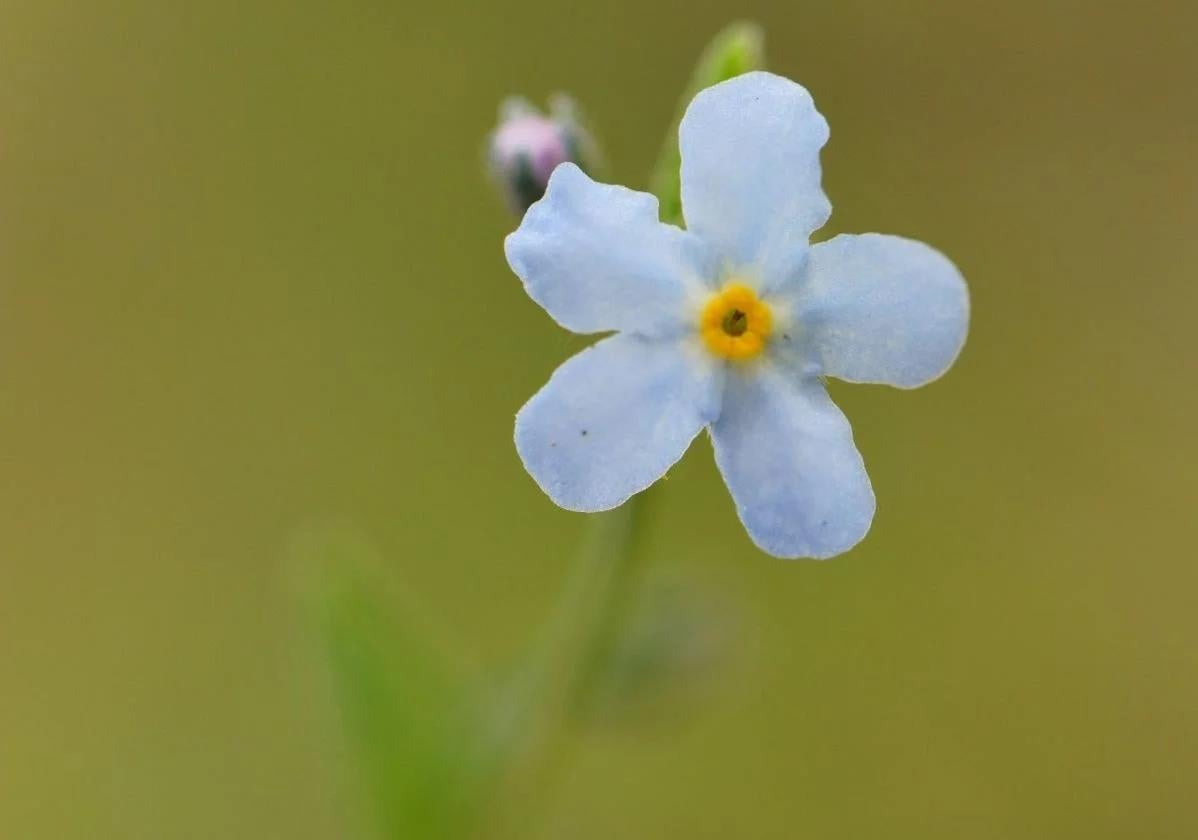This is the plant rediscovered in Andalucía after vanishing for four decades
'Nomevés' is one of the "scarcest and most endangered plant species of Iberian flora", states the Junta, rightly living up to its common name in Spanish meaning 'you can't see me'
SUR
Malaga
Tuesday, 13 May 2025, 22:12
For over four decades it was thought to be extinct, but it has now been rediscovered in Andalucía. The Junta's regional environment department has officially confirmed the discovery in the province of Seville of one of the "scarcest and most endangered plant species of Iberian flora." Gyrocaryum oppositifolium Valdés (to give it its scientific name), popularly known as 'Nomevés' (translating as 'you can't see me'), precisely because of its small size and the brevity of its flowering. Its common name in English is the Ringed Nut for the tight band that wraps around the seed pod of this plant.
The Junta has confirmed that this species, which had not been sighted in Andalucía for over 40 years, has been found once more in the Sierra Morena natural park (Seville), thanks to the monitoring work carried out by the botanists of the Red Andaluza de Jardines Botánicos y Micológicos en Espacios Naturales (the Junta's network of major botanical gardens that monitors all flora in the region).
The discovery has come as a real surprise to botanists across the region as no specimens had been spotted in their last-known location since 1982, despite continuous visits to the area. The recent discovery of more than 100 live specimens not only confirms the plant's return to Andalucía, but also gives hope that it will stay, becoming part of the ecosystem. Its reappearance could be linked to climatic conditions such as the abundance of rainfall recorded thus far this year.
This species is actually endemic to the Iberian peninsula, originally identified and named in Constantina (Seville) in 1982 by Benito Valdés Castrejón, a botany professor at the University of Seville. We only know of three sites that are spread far apart across Spain: in addition to the one in Andalucía, two others have been documented in Ponferrada (León) and Cadalso de los Vidrios (Madrid), discovered in the 1990s and early 2000s respectively.
Conservation efforts
Regional minister for the environment, Catalina García, has valued this finding as a success of the conservation efforts carried out in Andalucía. "We have shown that the commitment to biodiversity is much more than a declaration, it is a firm public policy that bears fruit," she said. She also stressed that the sighting of this plant "is a cause for joy, but also a reminder of the fragility of many elements of our natural heritage and the need to continue to protect them."
Nomevés is officially catalogued as "endangered" in Andalucía's catalogue of threatened flora, and is listed as a priority taxon (recognising this name as its official name) in the Atlas y Libro Rojo de la Flora Vascular Amenazada de España (Spain's red list for endangered plant life). Moreover, according to this red list, its status is "in a critical state." These classifications reflect its extreme vulnerability, with populations made up of very few individual plants that are subject to multiple threats, although the rediscovery of this group of plants could provide new data on its adaptive capacity.
Low reproductive capacity
Among the main pressures facing the species, the specialists have identified low reproductive capacity and the proliferation of more competitive plant species that benefit from human presence. Added to this is the risk of them being picked, both by amateurs and for scientific purposes, which in the past has seriously weakened the Andalusian population.
The regional minister indicated that "we have strengthened the mechanisms for monitoring endangered species thanks to the work of the technical teams of the Andalusian botanical gardens network, whose meticulous work has made achievements such as this possible." In this regard she added that this discovery obliges us to redouble our conservation efforts, "because we now have a collective responsibility not to lose such a valuable botanical heritage as this one." In fact, she confirmed that the botanists are already working on obtaining seeds from the plants at this location, with the aim of conserving them in the BGVA seed bank for future work.
Catalina García also insisted that the protection of this species will require specific measures adapted to its rarity and uniqueness. "We are beginning a new chapter in the conservation of the 'Nomevés', and we are going to develop actions appropriate to its delicate life cycle and the peculiarities of its habitat," she said. She also pointed out that its small size and short-lived flowering season may have contributed to it going unnoticed in other places, which is why a new phase of active prospecting and searching is under way in similar areas of Andalucía.
Finally, she said that "with events like this, we can see that our nature still holds surprises, and that, with perseverance, scientific rigour and institutional commitment, it is possible to recover species that we thought were lost."
